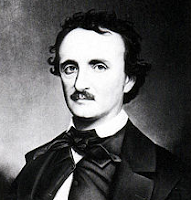 |
| Alphonse Gabriel Capone |
January
was always an interesting month in his life; it was one hundred fourteen
years ago this month that he was born, ninety-three years ago that Prohibition was
enacted, and sixty-six years since the death of Al Capone, Chicago
gangster.
 |
| Al and his mother, Teresa |
He
was born Alphonse Gabriel Capone on January 17, 1899 in Brooklyn, New
York. His parents, Gabriele and
Teresina Capone, were Italian immigrants. Gabriele Capone worked as a barber, and Teresa was a
seamstress. Capone was one of nine children. He dropped out of school at the age of fourteen and was
heavily influenced by New York gangster, Johnny Torrio.
 |
| Five Points Gang |
Capone
started with small time gangs but quickly moved up to Torrio’s Five Points
Gang. This group, made up of
Italian-American men and boys, was based in the Sixth Ward (Lower Manhattan) of
New York City. It was during this
time that Capone suffered the three slashes on his face that earned him the
name, ”Scarface.”
 |
| Mae Josephine Capone |
 |
| Capone's Chicago Home |
Capone
married Mae Josephine Coughlin on December 30, 1918, one month after their
first son, Albert Francis Capone, was born. Shortly after, Capone moved to Chicago. In 1923, he
purchased a house for his family in the Chicago neighborhood of Park Manor.
 |
| Johnny Torrio |
Johnny
Torrio recruited Capone and moved him to Illinois in 1919 for potential Chicago
“business opportunities.” With
Prohibition now law, Chicago offered gangsters a great opportunity for
“bootlegging” – smuggling illegal alcohol - into the city.
 |
| Al Capone "The Boss" |
 |
| Downtown Chicago in the 1920's |
Capone
organized Chicago’s underworld and quickly made the town his own. In 1925, Torrio handed over the reigns
of “The Outfit” to Capone. During Prohibition, with Capone as the
crime boss, the Outfit, also known as the Chicago Syndicate, and the Chicago
Mob, made over $100-million dollars per year in revenues from gambling,
prostitution, racetracks, night clubs, and the sale of alcohol. (The Chicago
Outfit is still in existence.)
 |
| Chicago Mayor, William Thompson |
Capone’s
gang operated casinos and speakeasies throughout the city with the bribed
blessings of Chicago Mayor, William “Big Bill” Hale Thompson.
 |
| St Valentine's Day Massacre |
The
1929 Saint Valentine’s Day Massacre, where seven rival gang members were gunned
down in a garage, has been attributed to Capone’s order, but facts to
substantiate that were never proven.
When questioned, Capone had an alibi – he was at his house in Palm
Island, Florida.
 |
| Soup Kitchen, courtesy of Capone |
Capone understood the benefit of a good PR campaign. He acquired media attention
by opening soup kitchens for the poor, and providing clothing to those who
could not afford them, providing assistance at his expense. The way Capone saw it; he was “just
a businessman, giving the people what they want." And,
because of the effects of Prohibition and the Great Depression, the public
wanted to believe him.
In
1930, Capone was named as Chicago’s “Public Enemy Number One.”
 |
| Capone's Arrest Record |
 |
| Capone's Mug Shot |
Prohibition
agent, Eliot Ness, was intent on convicting Capone on bootlegging charges, but
never could. In 1931, Ness settled
on arresting Capone for income tax evasion. Following a long and corrupt trial, Capone was sentenced to
11 years in prison. He was first
sent to the Atlanta Penitentiary, and then moved to the Lincoln Heights Jail in
L.A. On August 11, 1934 he was sent to "The Rock" - Alcatraz.
 |
| Capone's Cell |
 |
| Alcatraz Sign |
Capone
spent the last year of his sentence in the prison hospital, dealing with the
disabling effects of syphilis. He
was released from Alcatraz on January 6, 1939, and sent to the Federal
Correctional Institution on Terminal Island in California to serve a one-year
sentence for contempt of court.
 |
| Capone Before Release |
 |
| Death of Capone Reported |
Capone’s
reign as Chicago’s lead crime boss was over. Capone returned to his home on Palm Island, in Florida after
prison. His physical and mental
health deteriorated to that of a 12-year-old child. On January 21, 1947, he
suffered a stroke. The next day, January 22, 1947 Al Capone suffered a fatal heart attack and died.
He was 48 years old.
 |
| Original Family Stone |
 |
| Capone's Grave at Mt Carmel Cemetery |
Capone
was buried at Mount Olivet Cemetery on Chicago’s South Side, along side his
father and brother, Frank. In
1950, all three were moved to Mount Carmel Cemetery in Hillsdale, Illinois.
Al
Capone was, and continues to be, one of the most notorious gangsters of the 20th
Century.
~ Joy





























































